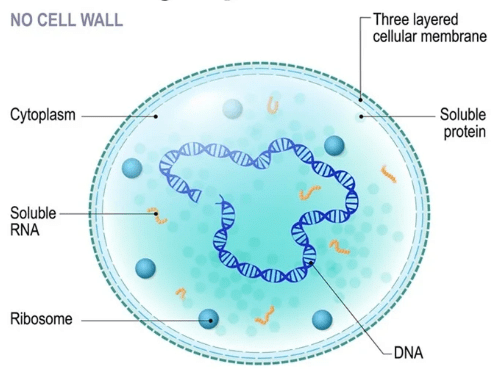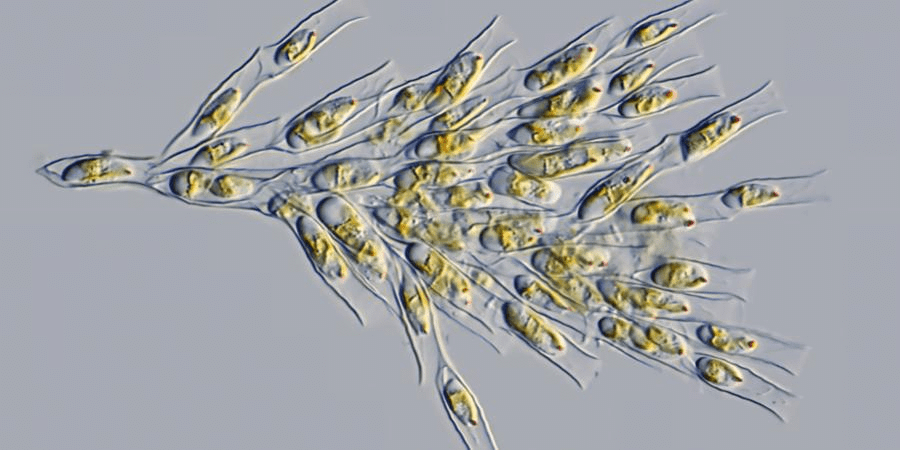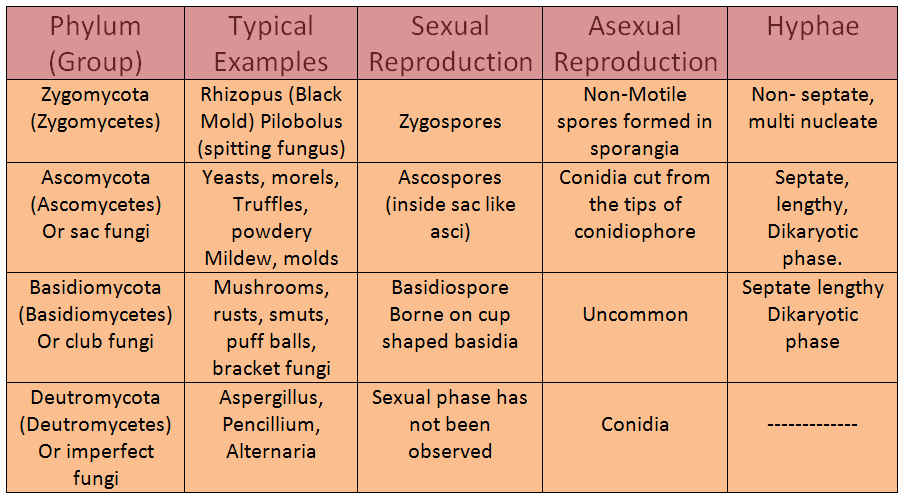NEET Exam > NEET Notes > NCERT Exemplar & Revision Notes for NEET > Detailed Summary: Biological Classification
Detailed Summary: Biological Classification | NCERT Exemplar & Revision Notes for NEET PDF Download
| Table of contents |

|
| Systems of Classification |

|
| Five Kingdom Classification |

|
| 1. Kingdom Monera |

|
| 2. Kingdom Protista |

|
| 3. Kingdom Fungi |

|
| 4. Kingdom Plantae |

|
| 5. Kingdom Animalia |

|
Systems of Classification
- Identification of differences among organisms and placing them into groups that reflect their most significant features and relationships are called Biological classification.

- The biological classification was first proposed by Aristotle who divided plants into herbs, shrubs, and trees. Animals were classified into with RBC’s and without RBC’s.

- Artificial system of classification was adopted by Pliny the Elder for animals on the basis of habitat. Proposed by Linnaeus.
Example: Land, air, and water. - The first natural system of classification was proposed by Schimper (1879), followed by Eichler (1883).
Table: Two kingdom classification
Five Kingdom Classification
- Given by R. H. Whittaker (1969).
The five-kingdom classification of Whittaker was based on 3 characters:
(i) The complexity of cell: Cell is prokaryote or eukaryote; on this basis, kingdom Monera is formed. And all the prokaryotes are grouped into it.
(ii) The complexity of organism: Organism is unicellular or multicellular, on this basis, kingdom Protista was formed, and all the unicellular eukaryotes are grouped into it.
(iii) Nutrition: Organism is autotrophic or heterotrophic, on this basis kingdom Fungi, Plantae and Animalia were formed.
The five kingdoms classified by Whittaker are:
1. Kingdom Monera
- It Includes prokaryotes.
 Prokaryote
Prokaryote - Typically unicellular organisms (but one group is mycelia).
- Genetic material is naked circular DNA, not enclosed by the nuclear envelope.
- Ribosomes and simple chromatophores are the only subcellular organelles in the cytoplasm. The ribosomes are 70S.
- Sap vacuoles do not occur. Gas vacuole may be present.
- The predominant mode of nutrition is absorptive. But some groups are photosynthetic and chemosynthetic.
- The organisms are non-motile or move by the beating of simple flagella or by gliding.
- Flagella composed of many intertwined chains of the protein flagellin.
- Maoneran cells are microscopic.
- Most organisms bear a rigid cell wall (peptidoglycan).
- Reproduction is primarily asexual by binary fission or budding. Mitotic apparatus is not formed during cell division.
- Examples: Bacteria, actinomycetes, mycoplasma and cyanobacteria.
- Smallest and most abundant organism on Earth.
Bacteria
- Bacteria are found in various shapes like:
(a) Coccus (spherical)
(b) Bacillus (rod-shaped)
(c) Vibrio (comma-shaped)
(d) Spirillum (spiral-shaped)
- Bacteria found almost everywhere and can be Photosynthetic autotrophs, Chemosynthetic autotrophs or Heterotrophs.
Archaebacteria
- Archaebacteria has different cell wall structure due to which they can live in most harsh habitats.
(a) Halophiles (salt-loving)
Example: Halobacterium and Halococcus.
(b) Thermoacidophiles (in hot springs)
Example: Sulfolobus and Thermoplasma.
(c) Methanogen (marshy area),e.g., Methanobacterium, Methanolinea.

- Methanogens are also found in the guts of several ruminant animals such as cows and buffalos. They are responsible for the production of methane (biogas) from the dung of these animals.
Eubacteria
- These are also known as true bacteria.
 Eubacteria
Eubacteria - They have a rigid cell wall.
- They possess flagellum, if motile.
- They are also known as blue-green algae or Cyanobacteria.
- Cyanobacteria are photosynthetic autotrophs.
- These are unicellular, colonial or filamentous algae.
- Colonies are surrounded by a gelatinous sheath.
- Some of the bacteria can fix atmospheric nitrogen by specialized cells.
Example: Anabaena and Nostoc. These special cells are called heterocyst. - Chemosynthetic Autotrophs: Oxidize various inorganic substances such as nitrates, nitrites and ammonia and use the released energy for ATP production. They play a great role in recycling nutrients like nitrogen, phosphorus, iron and sulphur.
- Heterotrophic Bacteria: The most abundant in nature.
(a) Most of them are decomposer.
(b) They are helpful in making curd from milk.
(c) They are helpful in the production of antibiotics.
(d) Some are pathogen causing diseases like cholera, typhoid, and tetanus. - Bacteria reproduce mainly by fission, also produce spore in unfavourable condition.
- Reproduce sexually by transfer of DNA from one bacteria to others, the process called conjugation.
Mycoplasma
- They completely lack a cell wall.
- They are the smallest living cells known.
- They Can survive even without oxygen.
- Pathogenic in animals and plants.
2. Kingdom Protista
- All are unicellular and eukaryotic.
- Primarily aquatic and can live in moist places.
- Forms a link with the others dealing with plants, animals and fungi.
- The cell body contains a well-defined nucleus and membrane-bound organelles.
- Some have cilia or flagella.
- Reproduce asexually and sexually by a process involving cell fusion and zygote formation.
Chrysophytes
- Includes diatoms and golden algae (desmids).
 Chrysophytes
Chrysophytes - They are photosynthetic.
- They are found in freshwater as well as in marine environments.
- Mostly planktonic ( passive swimmer).
- Cell walls overlap to fit together like a soapbox.
- Cell wall contains silica hence indestructible.
- Their accumulation forms ‘Diatomaceous Earth’.
- Used in polishing, filtration of oils and syrups.
- Diatoms are the chief ‘producers’ in the oceans.
Dinoflagellates
- They are marine, photosynthetic.
- The cell wall has stiff cellulose plates. Appears yellow, green, brown, blue or red depending on the pigments.
- Have two flagella − one longitudinal and other transversely in a furrow between wall plates.
- Red Dinoflagellates (Gonyaulax) form red tides.
 Red Tides
Red Tides
3. Kingdom Fungi
- Fungi are eukaryotic organisms.
 Fungi
Fungi - They are non-vascular.
- They reproduce by means of spores called conidia or sporangiospores or zoospores.
- Depending on the species and conditions, both sexual and asexual spores may be produced.
- They are non-motile.
- Exhibit the phenomenon of alternation of generation.
- The vegetative body of the fungi may be unicellular or composed of microscopic threads called hyphae. The network of hyphae is known as mycelium.
- The cell wall structure is similar to plants, but chemically the fungi cell wall is composed of chitin.
- Fungi are heterotrophic organisms.
- They digest the food first and then ingest the food, and to accomplish this, fungi produce exoenzyme.
- Store their food as starch.
- Biosynthesis of chitin occurs in fungi.
- The nucleus of the fungi is very small.
- During mitosis, the nuclear envelope is not dissolved.
- Nutrition in fungi is saprophytic, or parasitic or symbiotic.
- Reproduction in fungi is both by sexual and asexual means. The sexual state is referred to as teleomorph, and the asexual state is referred to as anamorph.
Table: Different types of fungi
4. Kingdom Plantae

- Most of the plants are eukaryotic.
- They contain chlorophyll.
- Cells are surrounded by the cell wall.
- The cell wall of plant cells is composed of cellulose.
- They have the ability to grow by cell division. Growth occurs due to the presence of definite growing points or cells. In higher forms, growing areas are called meristem.
- In the life cycle of plant cells, the interchanges occur from the embryos and are supported by other tissues and self produce.
- Plants have tissue and organ.
- They obtain their energy from the sun through photosynthesis.
- Plants reproduce both sexually and asexually. Alternation of generation is found in plants.
- They lack motility.
5. Kingdom Animalia

- Animals are eukaryotic, multicellular and heterotrophic organisms.
- They have multiple cells with mitochondria.
- They depend on other organisms for food.
- Biologists recognize 36 phyla in the animal kingdom.
- The size of animals ranges from a few celled organisms like the mesozoans to animals weighing many tons like the blue whale.
- The animal cell contains organelles like the nucleus, mitochondria, Golgi complex, endoplasmic reticulum, ribosomes, lysosomes, vacuoles, centrioles, and the cytoskeleton.
- They have a tissue/organ/organ system.
- Organ systems are the skeletal system, muscular system, digestive system, respiratory system, circulatory system, excretory system, reproductive system, immune system and endocrine system.
- Most animals have the ability to move, and they show rapid movement as compared to other organisms.
The document Detailed Summary: Biological Classification | NCERT Exemplar & Revision Notes for NEET is a part of the NEET Course NCERT Exemplar & Revision Notes for NEET.
All you need of NEET at this link: NEET
FAQs on Detailed Summary: Biological Classification - NCERT Exemplar & Revision Notes for NEET
| 1. What is biological classification? |  |
Ans. Biological classification is the process of categorizing and organizing living organisms into different groups based on their similarities and evolutionary relationships. It helps scientists understand and study the diversity of life on Earth.
| 2. What are the five kingdoms in the five kingdom classification? |  |
Ans. The five kingdoms in the five kingdom classification are:
1. Kingdom Monera: This kingdom includes prokaryotic organisms, such as bacteria and blue-green algae.
2. Kingdom Protista: It consists of eukaryotic organisms that are mostly unicellular, such as protozoans and algae.
3. Kingdom Fungi: This kingdom comprises organisms that are heterotrophic and absorb nutrients from their surroundings, such as mushrooms and yeasts.
4. Kingdom Plantae: It includes multicellular, autotrophic organisms, such as plants, which can photosynthesize.
5. Kingdom Animalia: This kingdom consists of multicellular, heterotrophic organisms, such as animals, which obtain nutrients by consuming other organisms.
| 3. What is the purpose of classification in biology? |  |
Ans. The purpose of classification in biology is to systematically organize and categorize the vast variety of living organisms based on their shared characteristics and evolutionary relationships. It helps in identifying and naming species, understanding their relationships and similarities, and studying the diversity of life on Earth.
| 4. How does biological classification help in scientific research? |  |
Ans. Biological classification plays a crucial role in scientific research by providing a framework for organizing and studying the vast array of living organisms. It helps scientists in:
- Identifying and naming new species: Classification allows scientists to categorize and provide unique names to newly discovered organisms.
- Understanding evolutionary relationships: By classifying organisms based on their similarities and shared characteristics, scientists can infer their evolutionary relationships and study the patterns of evolution.
- Studying biodiversity: Classification allows scientists to analyze the distribution and diversity of different species in different ecosystems, contributing to our understanding of biodiversity.
- Formulating hypotheses and conducting comparative studies: Classification helps scientists identify related species and compare their traits, behavior, and adaptations, enabling them to formulate hypotheses and conduct comparative studies.
- Conservation efforts: Proper classification helps in identifying endangered species and designing conservation strategies to protect them.
| 5. What are the limitations of the five kingdom classification system? |  |
Ans. The five kingdom classification system, although widely used, has some limitations. These include:
- Oversimplification: The system does not account for the complexity and diversity within each kingdom. It groups organisms broadly and may not reflect their true relationships or evolutionary history.
- Ambiguity: Some organisms may not fit neatly into one specific kingdom, leading to ambiguity in their classification. For example, certain protists share characteristics with plants, animals, and fungi.
- Lack of genetic information: The five kingdom classification system was developed before the advent of advanced genetic techniques. It does not take into account the genetic relatedness among organisms, which can provide a more accurate classification.
- Evolutionary changes: As our understanding of evolutionary relationships deepens, the five kingdom classification system may not accurately represent the true relationships among organisms. New discoveries and advancements in molecular biology have led to the proposal of alternative classification systems.
Related Searches
















